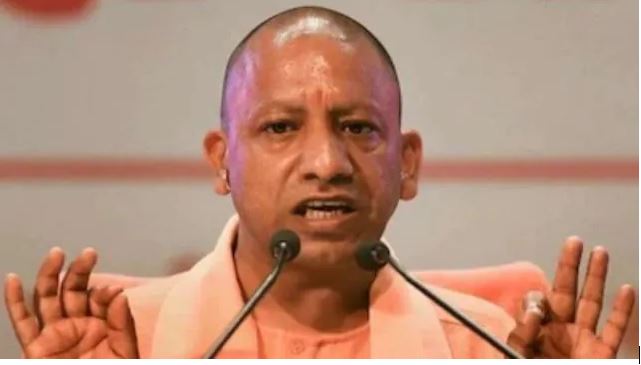Uttar Pradesh, the most populous state in India and only the fourth largest in terms of area, is all set to come out with a population control legislation, a draft for which was released on Saturday in the public domain. The bill provides incentives to married couples who limit their families to two or less children, whereas it disincentivises those who fail to adhere to the two-child norm.
The draft law has been prepared by the Uttar Pradesh Health Department based on the findings of the National Family Health Survey-4.
Here is all you need to know about the law.
Two-Child Policy
- Disincentives
The draft law says that any person having more than two children in Uttar Pradesh after the enactment of the law shall be debarred from benefits of all government-sponsored welfare schemes, cannot contest election to local bodies, shall be ineligible to apply for government jobs under the state government, cannot get a promotion in a government job, his or her ration card would be limited to four members, and he or she shall be ineligible to receive any kind of government subsidy.
- Incentives
The incentives would be extended to anyone who adopts the two-child norm by undergoing voluntary sterilisation operation upon himself or their spouse. This will include a soft loan for construction or purchasing a house on nominal rates of interest and rebate on charges for utilities such as water, electricity, and house tax.
Further, those who have only one child and undergo voluntary sterilisation will additionally get free health care facility and insurance coverage to the single child till he or she attains the age of 20 years, preference to single child in admission in all education institutions, including IIMs and AIIMS, free education up to graduation level, scholarship for higher studies in case of a girl child and preference to single child in government jobs.
Government employees who adhere to the two-child norm will also get two additional increments during the entire service, maternity or paternity leave of 12 months with full salary and allowances and free health care facility and insurance coverage to the spouse. Employees sticking to the one-child norm will be eligible for four additional increments in all apart from the incentives promised to the general public doing the same.
Also, a couple living below the poverty line, having only one-child and undergoing voluntary sterilisation operation upon himself or spouse shall be eligible additionally for payment from the government for a one-time lump-sum amount of Rs 80,000 if the single child is a boy, and Rs 1 Lakh if the single child is a girl.
Who comes under it’s ambit?
The law, when it comes into force, will be applicable to all married couples in the state of Uttar Pradesh who have attained the legal age. However, an exact criterion can only be described after it is finalised and published in the state Gazette. The law does not explicitly say anything about single parents, or children had outside of marriage. But other illustrations cited in the draft indicate that the cumulative count of biological children each person has will be the basis to decide whether they breach the law or not.
Why is it needed?
India was one of the first countries in the world to initiate a family planning programme, in 1952, aimed at “lowering fertility and slowing the population growth rate”. India’s National Family Planning Programme aims to reduce India’s overall fertility rate to 2.1 by 2025.
Controversy
One of the objections raised against the bill is that it explicitly targets Muslims, who various studies show, fare worse than or are at par with scheduled castes on socio-economic indicators. This is relevant because fertility choices have been closely linked to economic factors and socio-economic status by researchers.
Samajwadi Party MLA from Sambhal Iqbal Mehmood termed the law as a conspiracy against Muslims. He said that it is a veiled attack on the Muslim community in the garb of population control. “It is actually an attack on Muslims in the garb of population control,” Mehmood was quoted as saying by news agency PTI.
Another aspect that remains to be seen is how the law impacts remarriage for widowed or separated women; disincentivizing childbearing for previously married women can impact their socio-economic status and the possibility of remarriage.
When will the law be enforced?
The law states that it shall come into force after one year from the date of publication in the Gazette, which is still some time away as the law will first invite public suggestions, may be revisited by the law commission based on the feedback, and if any changes are made it will again be put in the public domain. Thereafter, a final version will be introduced in the Legislative Assembly. After passing it will be sent for the governor’s nod.
What if a couple conceives triplets or twins: Are there any exceptions?
Some safeguards have been built into the law to make sure it is fair to parents in certain exceptional circumstances. These are:
- In case of multiple births in a second pregnancy, or having more than two children in the first pregnancy.
- The law would also not apply to those who adopt a third child after having two children conceived from a marriage
- Those whose one of the two children are disabled and they have a third child are also exempted.
- Parents who lose one or both of their children and conceive a third child will also not be violating the law.
What is the policy for polygamous marriages?
In the case of polygamous and polyandrous marriages, each couple will be counted as a separate unit for the purpose of calculation of the cumulative number of children, the law says. However, the person who is common in the marriages will be in contravention of the law if they cumulatively parent more than two children from all marriages.
“The personal law governing A allows polygamy. A has three wives B, C and D. A and B, A and C, and A and D shall be counted as three distinct married couple so far as the status of B, C and D is concerned but as far as the status of A is concerned, it shall be counted as one married couple for the purpose of calculation of cumulative number of children,” the draft says.
What is the policy on adoptions?
In case of adoption, the cumulative number of legal children each person has cannot exceed three, as per the law. A person will not be violating the proposed law if he or she, despite having two children conceived from a marriage(s), adopts a third child. However, a person having two children from their marriage cannot adopt more than one child without violating the law.
Likewise, a person having no children from their marriage, cannot adopt more than two children without breach of the law.
Do I have a say in the policy; how can I send my feedback?
Citizens can and are encouraged to send their suggestions and feedback on the law till on or before 19 July. The suggestions may either be sent through e-mail at statelawcommission2018@gmail.com or through post to the State Law Commission, Uttar Pradesh. (First Post)

Readers like you, make ESHADOOT work possible. We need your support to deliver quality and positive news about India and Indian diaspora - and to keep it open for everyone. Your support is essential to continue our efforts. Every contribution, however big or small, is so valuable for our future.












Those who remember ‘Hum do hamare do’ mean two of us and two of our children during 1970s Emergency rule will sympathise with UP CM’s draft law. Over population when resources are limited is not good for any country. If certain section of the community feel aggrieved they have ask themselves on what basis are they producing children who become burden to themselves and civic society
India’s population has increased by 1 billion since 1947. These and other population control measures are long overdue.